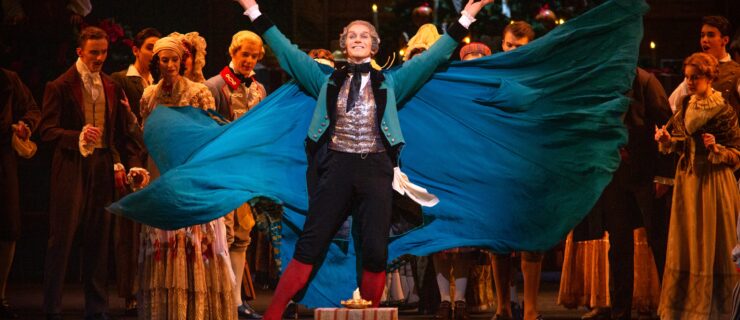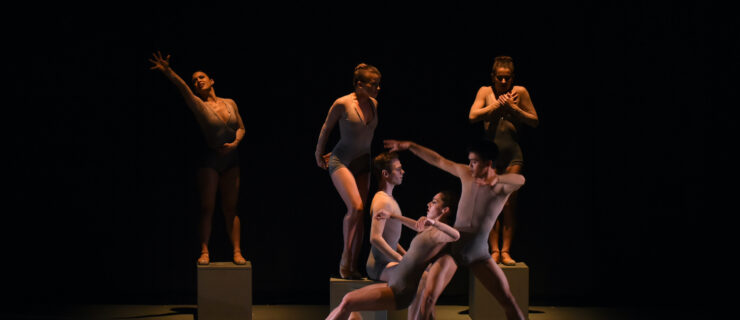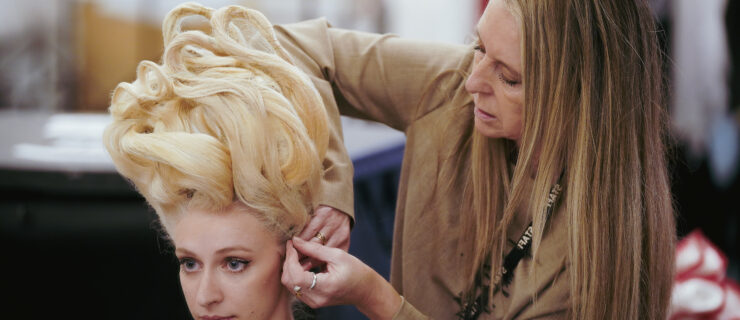The Judges’ Pet Peeves
When a dancer fell flat on the floor during her Esmeralda solo at Youth America Grand Prix finals one year, it cost her a few points, recalls judge Phillip Broomhead. But she compounded it by how she handled the mishap. Tears welled up. She fell again in the next section of pirouettes and began visibly crying. She wept through the rest of the usually sassy solo, half bowed, then ran offstage, sabotaging her performance completely.
Competition judges have seen it all—and they have a long list of what they never want to see again. From choice of variation to interpretation to final bow, it all counts. Pointe interviewed three veteran judges who have seen enough Kitri solos to recognize a red flag a mile away. They shared their views on appropriate variations, the importance of professionalism and the difference between technique and artistry.
Sick Of Sugar Plum
Do judges get tired of certain variations? “I never want to see Sugar Plum, or one of Aurora’s solos or Flames of Paris again,” says Broomhead, ballet master at Houston Ballet. “I’ve seen Kitris with no spark, fire or emotion. Whatever you choose, don’t just go through the motions. Every step needs to tell a story.”
Paul Chalmer, a former dancer with National Ballet of Canada, and a recent Prix de Lausanne judge, believes a dancer’s choice of variation says a lot about how she perceives herself. “Sometimes you wonder if a variation has been imposed on a dancer by a coach because it’s so far from the dancer’s own look, personality and sensitivity,” he says. “You can see the dancer has no affinity with the steps or temperament of the piece. A badly chosen variation may make the difference between winning or not.”
John Meehan agrees. Now a professor of dance at Vassar College, he has judged Prix de Lausanne, YAGP and the USA IBC in Jackson, MS, and has seen dancers struggle with variations that seem alien or unflattering. “Even the way you walk from the wings can say a lot about you and your comfort,” he notes.
Dance To Your Strengths
Judges look for clean technique. Triple and quadruple pirouettes may wow, but only if you can pull them off effortlessly. “I’d rather see two well-placed pirouettes than five spinning out of control,” says Broomhead. Dancers and coaches need to consider how to best showcase a dancer’s qualities. “You better make sure what you are good at is in your variation,” says Meehan.
Striking a balance between technique and artistry can be difficult, especially for younger competitors. Ideally, each serves the other to make a complete dancer. “Using technique to communicate is what we strive for,” Chalmer says. “For me, a dancer who communicates, even if incapable of technical fireworks, will have my vote over someone with lots of turns or very high extensions, but nothing to say.” Broomhead agrees. “I’ve seen a technically strong dancer deliver absolutely dull, lifeless performances.”
How Bad Is Falling Off-Pointe?
When Sarah Lane’s music stopped at YAGP in 2002, her split-second decision to continue to the end of her variation impressed the judges. “We could hear the music through her dancing,” remembers Meehan. “It was very impressive.” Lucky for her, American Ballet Theatre artistic director Kevin McKenzie was in the audience and soon Lane, who had recently completed her training at the Timothy M. Draper Center for Dance Education, had a contract with the Studio Company; now she’s a soloist at ABT. Lane had transformed a problem into an opportunity, showing a can-do spirit that captivated the audience as well as the judges.
Mistakes can range from one missed turn to an embarrassing splat across the stage. How you cope in a tricky situation says a lot about your character. “It’s not important if someone falls or falls off-pointe,” says Chalmer. “I’ve seen the greatest dancers in the world flat on the floor, and I’ve been there myself. A missed pirouette is unfortunate, but not a major problem.” However, mistakes that cause the rest of the performance to
deteriorate show a lack of focus. “I’ve seen dancers completely fall apart,” says Broomhead. “It’s important not to be thrown off; you must pick it up quickly and have a backup plan. If you did fewer turns, then you will have time to fill.”
However, repeated mistakes can clue judges in to a bigger problem, notes Chalmer: “If a dancer falls because she is not centered, because of a bad understanding of basic technique, that is another matter.” Broomhead adds, “One or two mistakes are expected, but numerous mistakes point to a technical issue.”
Don’t Screw Up The Class
Many competitions make technique class a component, and, surprisingly, it’s where the judges often see the oddest behavior. A high-handed attitude at the barre has become one of Broomhead’s biggest frustrations. “It’s not good when a student looks at you like you are from another planet when you give them a comment or correction,” he says.
Chalmer has also noticed a lack of respect in class. “Making faces or even stopping mid-combination, when a dancer thinks they haven’t done a step as well as they could, is very off-putting,” he says. While he understands that behind it may be insecurity, he cautions it can be read as a form of arrogance. Further, he notes, it’s “disrespectful and unprofessional” to change a combination to steps you prefer.
Onstage Etiquette
The grace you show onstage extends beyond the steps you perform. Immature behavior at any point can count against you. “Once a dancer did a little shuffle with her foot to indicate that the floor was too slippery, bowed sullenly, then stormed off,” recalls Meehan. Of course, professionalism factors into the actual performance as well. Broomhead recalls a time when a competitor decided to cheese it up for his final windup. “Winking and blowing kisses at the audience was just in poor taste.”
In the end, what matters most is something hard to put in words: the artist rising above all that is out of their control. It’s a contest, and judges judge. Yet they do their best to put artistic sensibility into the equation. “I think what is most important is a dancer’s soul. Attitude, both physical and mental, is vital because it’s all about potential,” says Chalmer. “I try to award dancers for what their talent and intelligence might allow them to achieve in the future.”
Nancy Wozny writes and blogs on dance in Houston, TX.
The Places To Go
Ballet competitions have many missions. Some only permit student competitors and offer scholarships or second company slots. Others are geared toward young professionals and provide a showcase—or a jumpstart—for budding talent. Browse competition websites to find the best fit for your level and goals. Look at past winners, prizes, judges and the range of repertoire required. The list below includes U.S. and international competitions.
Boston International Ballet Competition
Boston, Massachusetts
Ages: 13–25
How To Enter: Application & DVD
Fee: $50
Past Prizewinners: Launched this year
bostonibc.org
Cape town International Ballet Competition
Cape Town, South Africa
Age: 15–28
How To Enter: Application & DVD
Past Prizewinners: Alys Shee, Aaron Smythe
ctibc.com
Cecchetti International Classical Ballet Competition
Manchester, United Kingdom
Age: Qualified in Cecchetti Advanced 1; under age 20
How To Enter: Application & DVD
Fee: Approximately $25
Past Prizewinners: Mary Kate O’Sullivan
cicb.org
First Beijing International Ballet and Choreography
Competition
Beijing, China
Age: 18–26
How To Enter: Application & DVD
Fee: $75
Entrants Include: Emily Kadow, Melissa Hamilton
china-ibcc.org/EN
Genée International Ballet Competition
Travels to different cities
Age: 15–19
How To Enter: Application
Fee: Approximately $450
Past Prizewinners: Stella Abrera, Frances Chung
facebook.com/geneeinternationalballetcompetition
Helsinki International Ballet Competition
Helsinki, Finland
Age: 15–25
How To Enter: Application, photos & recommendations
Deadline: 1/31/12
Fee: Approximately $50
Past Prizewinners: Meaghan Hinkis, Brooklyn Mack, Jeffrey Cirio
balcomphel.fi/home.html
New York City Dance Alliance
New York, New York
Age: 7–19
How To Enter: Application
Deadline: Regionals begin in October
Fee: $35–$90
Past Prizewinners: Melissa Hough, Jon Bond, Dusty Button
nycdance.com
New York International Ballet Competition
New York, New York
Age: Women: 17–23; men: 18–24
How To Enter: Application, photos & DVD
Deadline: 1/17/12
Fee: $75
Past Prizewinners: Karina Gonzalez, Kathleen Breen Combes, Victoria Jaiani
nyibc.org
Prix de Lausanne
Lausanne, Switzerland
Age: 15–18
How To Enter: Application & DVD
Fee: Approximately $100
Past Prizewinners: Alex Wong, Maria Kochetkova
prixdelausanne.org
Seoul International Dance Competition
Seoul, South Korea
Age: 12–35
How To Enter: Application & DVD
Fee: $150
Past Prizewinners: John Mark Giragosian, Whitney Jensen
sicf.or.kr/eng/main.html
Tanzolymp
Berlin, Germany
Age: 18–21
How To Enter: Application
Fee: Approximately $100
Past Prizewinners:
Esteban Hernandez,
Hee Seo
tanzolymp.com
USA International Ballet Competition
Jackson, Mississippi
Age: 15–26
How To Enter: Application & DVD
Deadline: Fall 2013
Fee: $75
Past Prizewinners: Daniil Simkin, Misa Kuranaga, Isaac Hernandez
usaibc.com
Varna International Ballet Competition
Varna, Bulgaria
Age: 15–26
How To Enter: Application
Fee: Approximately $185
Past Prizewinners: Sae Eun Park, Maria Baranova, Ivan Vasiliev
varna-ibc.org
World Ballet Competition
Orlando, Florida
Age: 10–22
How To Enter: DVD
Fee: $50
Past Prizewinners: Sasha de Sola, Joseph Gatti, Thomas Mattingly
wbcorlando.com
Youth America
Grand Prix
New York, New York
Age: 9–19
How To Enter: Application
Fee: $35–$100
Past Prizewinners:
Joseph Gorak, Sarah Lane,
Maki Onuki
yagp.org
Check websites for deadlines not available at press time.





